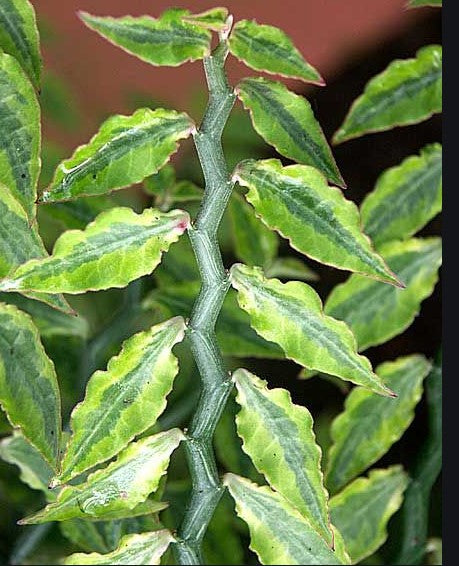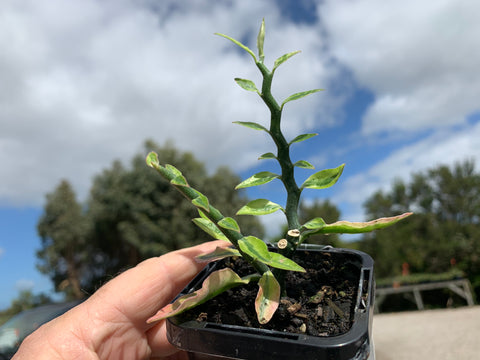

TIP: Increase the humidity by misting the leaves and branches with water from a spray bottle. It can thrive indoors at room temperature if kept it in a humid area. It’s a tropical plant needing a combination of sunlight and moisture. If temperatures get below 40° degrees Fahrenheit during the winter, move the plant indoors. The recommended growing zone is USDA hardiness zone 9 – 11. It grows best in an area receiving sun throughout the day without direct sunlight. Provide this succulent plant with plenty of sunlight. Devil’s Backbone Plant Temperature and Light Requirements The orangish-red flowers grow from the tips of the stems on small, slipper-shaped bracts. The flowers are small, don’t last long, and do not produce a scent. Flowering and Fragranceĭevil’s backbone produces small slipper-shaped flowers, where the Latin name Pedilanthus (“Slipper Flower”) comes from. It grows at a medium rate and may take several years to mature. As the plant matures, it can become quite bushy. When the plant is still maturing, its leaves may not grow very thick. The thick branches and stems have a zig-zag pattern and produce small, oval-shaped leaves with pointed tips. The Devil’s Backbone plant is a shrub and may eventually reach three to four feet in height. Devils Backbone Plant Care Size and Growth Here are a few tips on caring for this unique plant. In some regions, you’ll discover additional common names.


You can use just one indoor hanging plant to make a statement in a room, or display a collection, perhaps hanging them at different heights from the ceiling or on staggered shelves to create a wall of foliage and flowers.

(Image credit: Alamy) How do I display hanging plants indoors? In all cases, make sure you can reach the plants easily to water and feed them. When hanging a planter from the ceiling, locate a beam and screw in a sturdy hook securely – a pot, plant, compost and water can be surprisingly heavy so choose a chain and hook that can take their weight.Īn easier option is to hang your plants on a clothes rail or simply stand a pot or basket on a high shelf or bookcase, where the stems can trail gracefully over the edge. Mist the leaves once a week in spring and summer, and apply a balanced liquid fertilizer every month to six weeks from spring to autumn. Just take care not to drown it, watering plants only when the top of the compost feels dry, and even less frequently in winter. This pretty plant is easy to care for, sailing through periods of drought unscathed. Its stems of silver and green striped leaves, which are purple when young and remain purple on the undersides when mature, creating a dazzling curtain of color as they cascade from a hanging pot or basket. This trailing houseplant will add a colorful note to any bright room.


 0 kommentar(er)
0 kommentar(er)
